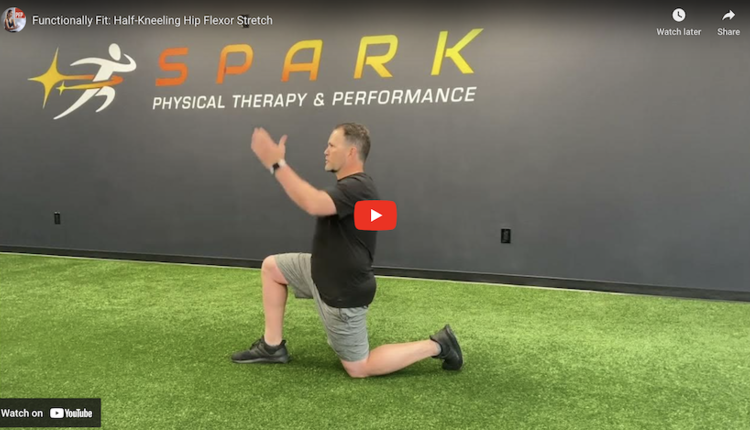Eight million people in the United States suffer from anorexia nervosa, bulimia and related disorders, according to the National Association of Anorexia Nervosa and Associated Disorders. This number may be higher because many sufferers are secretive and keep their disorder hidden, and physicians are not required to report cases of eating disorders. Many who suffer from an eating disorder tend to abuse exercise. They are running on our treadmills, taking our Spin classes and frequenting our elliptical machines. Others spend time with personal trainers.
We have the opportunity to lower this statistic, but we need to be able to recognize the warning signs and approach a client that appears to need help.
Education
We can only be as effective as our knowledge allows. This is why it is vitally important to know the signs and symptoms of eating disorders, since they take many forms. As professionals, our role is not to diagnose a client but to encourage them to seek help. We can only do this if we know what to look for when it comes to certain types of eating disorders.
Ø Anorexia Nervosa — A person suffering with anorexia limits the amount and type of food they eat. As a result of low self-esteem and possible depression, they will seek to control the one thing in their lives they feel they can: food intake. The consequences are gradual but steady; there will be significant weight loss. The person may be obsessed with being thin and complain of feeling fat, and they may also be obsessed with calories and fat content in foods. Some will turn to laxatives or diet pills to assist in starvation.
In addition to weight loss, a fitness professional can notice other signs associated with anorexia. They include thinning or brittle hair, ashen or gray skin, dizziness, complaints of feeling cold, low blood pressure, menstrual irregularities, constipation, insomnia, fatigue, mood swings and complaints of feeling worthless.
Ø Bulimia Nervosa — A person living with bulimia will resort to bingeing and purging cycles in order to control their weight. They will eat a large quantity of food — more than the average person would consume in one sitting — and then induce vomiting or use laxatives. They may do this as a release for their feelings of inadequacy and as punishment for the large amount of food they recently consumed. These actions take a toll on their bodily systems.
A professional may recognize a person that has bulimia by their obsession with weight and food, frequent sore throats or swollen glands, frequent use of laxatives, bruised or callused knuckles, bloodshot eyes, light bruising under the eyes and depression.
Ø Exercise Bulimia — Exercise bulimia, or compulsive exercise, requires the person to exercise beyond the limits that are normally considered safe. They use exercise as an outlet for their anxiety and to burn calories. For some, exercise validates eating. Exercise bulimics use the normally healthy activity of exercise in excess, oftentimes having a negative effect on their bodies. This excess often stems from a need for control in their lives and is used to forget about the anxiety, depression and guilt that they often feel.
Ø Compulsive Overeating and Binge Eating — Compulsive overeaters and binge eaters have an "addiction" to food. They go through binge cycles as a way to cope with their feelings of inadequacy, low self-esteem and shame for being overweight. They tend to overeat to feel better, but they simply feel worse because of their actions — so they overeat again.
People suffering from this addiction are at risk for a heart attack, hypertension, high cholesterol, kidney disease, arthritis and stroke.
On the surface, all eating disorders may appear as nothing more than a weight gain or loss. In reality, they are linked to much deeper issues of depression, obsessive/compulsive disorders and emotional conflicts. Unless these issues are addressed, a person who suffers from an eating disorder will never fully recuperate.
Liability
The fitness professional has an ethical and legal responsibility to a client that displays signs of an eating disorder. This liability must be addressed while continuing to stay within the scope of practice.
The fitness professional cannot:
· Prescribe
· Diagnose
· Counsel
On the contrary, a professional can:
· Make general recommendations regarding nutrition and exercise
· Screen for exercise limitations
· Follow national consensus guidelines for exercise prescription for medical disorders
· Coach
· Refer clients to an appropriate medical professional
The best way to stay within the scope of practice is to listen, support and refer. Great trainers don't know it all; they just know when issues are outside of their knowledge. The most appropriate course of action is to refer the client to a specialized health professional.
In the process of intervening with a potentially unhealthy client, the fitness professional must take care not to discriminate against the person. Eating disorders are classified as a disability, and clients with these disorders are allowed the same rights and usage of the club as any other members. A way to avoid being discriminatory is to utilize waivers and consent forms, which should be required for every member. Guidelines should be in place, stating that clients with a body mass index lower than a certain amount must be cleared by a physician before they can begin working out. This is the same screening tool that would require a client with high blood pressure or a heart condition to seek a doctor's approval before beginning an exercise program.
Every client must sign the participation waiver. This does not absolve the trainer of negligence — the waiver is designed to protect the trainer in an event of unforeseen injury to the client. If you are concerned that your client has an eating disorder, proceed with common sense. Deciding not to train the client until they are cleared by a doctor is a safe course of action to take.
To further protect yourself, document your suspicions. This is especially necessary if the client has any outward signs, such as a racing pulse, abnormally high or low blood pressure or unexplained muscle fatigue. Also, document when you spoke to the client about your concerns. If possible, get an agreement that they may have a problem and will seek help.
The risk of a client or their family attempting to sue a fitness professional for wanting to help is low. The line is crossed when a trainer is knowingly negligent.
Confronting a Client
Eating and exercise disorders are very individualized. A good course of action is to be non-confrontational. Be firm, yet supportive and sympathetic. You should be able to tell your client what you have witnessed in their exercise or eating habits and how those compare to normal habits. While it still may be uncomfortable, establish a relationship with a client before you address these issues, as they are more likely to listen and trust what you say. Be ready with handouts of places they can turn to if they choose to do so.
Hopefully, your opinion will cause the client to think and, ultimately, take action. If they don't seek professional help, you must use your best judgment to proceed. You can choose not to train the person. Make it clear that because you care about their well-being, they cannot continue training, as it is not helping. You are not saying that you won't be there for support, but you can no longer be their trainer. All you're asking the client to do is to be cleared by a doctor. This is much like the course of action you would take if you had a client that frequently experienced chest pain or dizziness while working out. What would you do if they collapsed? What if you suspected that the client had a prior medical issue that you knew about and didn't do anything to treat it? An episode similar to that could affect your career for years.
Be Supportive
Being a responsible trainer means that you need to say the hard things that no one else is willing to step up and say. You are in the best position to influence their lives because they trust your opinion and advice. In the business of personal training, you change and affect lives every day. Don't be afraid to affect one more if you are concerned that your client has an eating disorder.
Eating Disorder Resources
NATIONAL EATING DISORDERS ASSOCIATION
Hotline: 800.931.2237
NATIONAL ASSOCIATION OF ANOREXIA NERVOSA AND EATING DISORDERS
Hotline: 847.831.3438
Hotline: 866.690.7239
Amanda Tikalsky is the 2006 Personal Trainer of the Year at the Wisconsin Athletic Club in Milwaukee, Wisconsin. Her six years in the field allows her to train a variety of clients. She is also a regular contributor to "Ask the Trainer" in the company magazine, which can be viewed at www.thewac.com. Amanda can be contacted at atikalsky@thewac.com.












